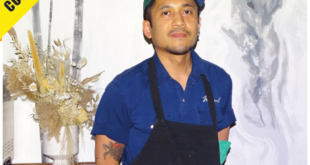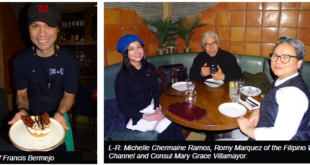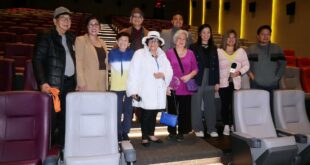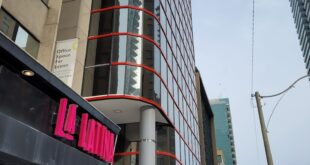No es cierto que la gente deja perseguir sus sueños porque envejece, envejece porque deja de perseguir suenos. (It isn’t true that people stop chasing dreams because they grow old, they grow old because they stop chasing dreams.) – Gabriel Garcia Marquez
(Read Part 1 of this adventure: Sampling La Vida Local along the Amazon)

The destination: Manaus, Brazil, one of the gateways to the mighty Amazon River. (Photo by Rodolpho Emanuel/Flickr/Creative commons License)
Along with most of the passengers, I was on the top deck watching the fading harbor lights. El Capitan whom I talked to earlier knew that I didn’t speak Portuguese. He kindly explained to me in Spanish (after so many decades in the region, I became fluent in “survival” Spanish) our itinerary for the next five days.
The riverboat would dock in some “caboclo” settlement every morning and stay there until all the passengers have had their lunch. “Caboclos,” I learned later, was the name given to the people who lived along the mighty river. Generally, they were of mixed ancestry reflecting the distinct origins of Brazil’s population: indigenous, Black African slaves and European settlers. The riverboat company had contracted small caboclo restaurants which served breakfast and lunch to the passengers. Dinner would be pre-cooked by the same caterers and would be reheated and served aboard the riverboat.
While the crew was busy loading and unloading cargo, some passengers would disembark while new passengers would board the riverboat. The MV Leao IV had a flatbed bottom and serviced the smaller settlements along the river; something the bigger ships could not do, lest they get scuttled in the mud. The passengers could explore the settlements until lunch time. After their mid-day meal, the boat would continue its journey inland towards the end of Brazil’s Amazon.
Long after most of the passengers had retired to their hammocks, I stayed on the third or top deck somewhat still unbelieving that a dream born more than 50 years ago in a grade school geography class in La Salle was becoming real. Adrenalin pumping, I took in as much of the sights as my eyes could see until finally, I too retired in my hammock.
The following morning, as I walked back to my hammock after my morning ablutions, I vowed not to stay up late like I did the night before. It resulted in me standing at the end of the line for the toilet and the wash basins. It was not a pleasant experience. There were no showers, just wash basins, so for the next four days we would all be, to use a popular ‘60s expression in the Philippines, dehin goli (no bathing).
A crew member was waiting for me by my hammock. He said the captain wanted to see me, so I followed him to the forward part of the main floor. But instead of going to the wheelhouse where the riverboat was controlled and which also housed the captain’s quarters, we entered one of two private cabins rented out to well-heeled passengers who could afford the higher fare. The captain was seated at the only table as he offered me the only chair. He said that the cabin had just been vacated and that I could have it. I told him I could not afford the extra expense.
One of the conditions I asked before I bought passage on the riverboat was that I be allowed to cook because I feared that I might not like the meals, which were part of the ticket. I was granted this request and I cooked chicken adobo which I knew would last and even taste better after a few days. But this was not to be so, because the captain, who had been attracted by the aroma and almost begged for a taste, which I granted, ate more than half of my baon. He said that it was “sabroso” and asked if I could cook it again for him and his crew. I politely declined the offer.
El Capitan or O Capitao now made an amended offer: in exchange for “supervising” the cooking of the crew’s dinner, I could have the just-vacated cabin for free for the remainder of entire trip. They would foot all the expenses and a tripulante (crew member) would be assigned to help me in everything I needed to do.
I was half listening to El Capitan as espied a member of the crew changing the bedding and another was mopping the toilet which also included a SHOWER. By the time the latter was putting a fresh roll of toilet paper in the washroom, my loyalty to my comrades among “the great unwashed” has wavered. In general, my politics have always favored the less privileged. But in that morning’s use of the common toilet, I used up my last small packet of Kleenex. The thought that, of using a page or two from last week’s issue of the weekly magazine Veja or O Malho, as did other passengers, was not very appealing. So, with many and great regrets, I deserted my peers in the hall of hammocks and accepted the captain’s offer. Even as I did so, I cursed myself for my mababaw na kaligayahan na nabili ng isang roll ng toilet paper (shallow pleasure that was bought with one roll of toilet paper)!
The Tripulante Or The Riverboat’s Crew
One of the tripulantes in the room was immediately appointed as my ” factotum.” To get onto his good side, I promptly rechristened him ” Pele” after the most famous soccer player in Brazil, if not the entire world. The only other famous Brazilian males I knew were Carlos Jobim, the musician/composer, and Paulo Freire, the progressive educator. I doubted if this crew member wanted to be known as “the pedagogue of the oppressed.” It was a good choice of names and it did get me into his good side. From that moment on and for the entire trip, we became nearly inseparable.
Except for the captain and the chief engineer — both were clearly of European stock — the rest of the crew were all caboclos. Despite their ethnic differences, they behaved more like family to each other. Having worked for the same company since they were teenagers, class differences were unimportant to them. They all prided themselves as hommos do rio or men of the river. All have traveled the entire 6,800 km. length of the river from their native Brazil to Iquitos, Peru. When the snow from the Andean region of Peru melts, it becomes the water that flows into the rivers Ucayali and Apurimac, the major rivers of that country. From the heights of Arequipa, the water drains into a basin outside Iquitos that is considered the beginnings to the mighty Amazon River.
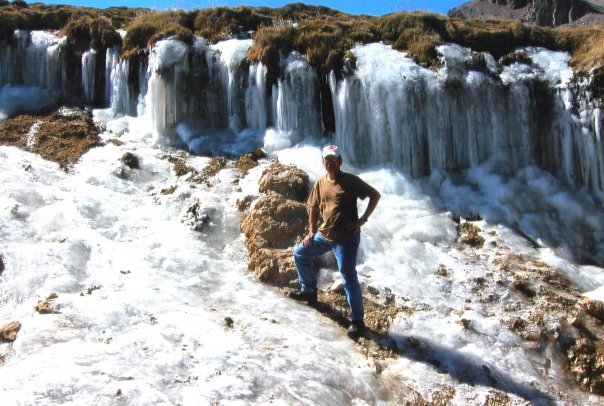
Arequipa, Peru. The melted snow flows to the Uacayali and the Apurimac rivers which drains to Iquitos. The beginnings of the mighty Amazon River.
The Caboclos And Their Settlements
The caboclos live a simple life with one foot in “the subsistence economy” and the other in “the market economy.” They have vegetable gardens and fruit trees around their houses but depend on the river for their protein and other nutrients. Most families also keep three- to six heads of cattle, which they fatten until the calves mature and are ready to be sold. Some also have speed boats with which they can sidle and hook up to the riverboats to sell fruits, honey, cheese, and other produce.
The first morning I agreed to ” supervise” the cooking of the crew’s dinner, Pele took me to the public market in the first caboclo settlement where the MV Leao IV docked. I wanted to know what ingredients were available for the meals that we would be preparing in the next four days. There was marine life from the river, some pork and beef and some fruit and vegetables from the gardens of the settlements. But except for the basics (e.g., milk, sugar, cooking oil, etc.), there was not much in canned and bottled goods. But in all the public markets, there were bottles of soy sauce, an ingredient generally identified with the Orient. I was told that Kikkoman has one of its largest factories in Brazil, which accepted a large Japanese migration around the end of the past century. Good, I thought. Apart from adobo which became the crew’s favorite, we were able to serve sweet and sour fish, humba, and chop suey.
The Passengers
Most of the passengers were themselves caboclos returning to their settlements. Easily identifiable among them was a group of women who had just attended a sales conference sponsored by their employer, a transnational producer and distributor of women’s cosmetics. They were a lively bunch who spent most of the day trying out their employer’s products on each other. When they weren’t putting makeup on each other, they conversed with the other passengers and the boat’s crew. Every night, they were on the top deck or the recreation area, singing or dancing mostly with each other. Most of the male passengers were watching movies or drinking beer.
Apart from these women selling cosmetics, there were two other women on the MV Leao IV, but they weren’t selling cosmetics: only entertainment and only to the male passengers. After delighting the crew by honoring the request for an adobo dinner, El Capitan offered to treat me to a bottle of Brahma beer. While nursing my beer, the two women passed by our table. Upon seeing them, El Capitan offered to add another ” perk” to my privileges: the services of either or both women for the rest of the trip. It might have been “an offer that could not be refused” by others, but I politely did (Peksman!). But I wondered where in that crowded boat they could possibly do their “entertaining.”
After an hour or so, the captain was called to the wheelhouse, and I repaired to my new quarters ready to sleep. Just when I was about to doze off, moans, groans and other cooing sounds emanating from the neighboring cabin forced me to stay awake. This went on for a while with the same sounds but now with different tones and pitch suggesting new and different sources. I now knew where the two women plied their trade. But the same knowledge made sleep impossible.
I decided to visit the captain’s quarters where there was music playing. The occupants greeted me with knowing smiles while the captain facetiously asked me if I had insomnia. I replied that I might still be unaccustomed to my new quarters, it was hard to sleep. My reply must have sounded like a “double entendre” because the crew responded with roaring laughter. El Capitan told me to be a bit more patient as their agreement with the two working women was that they would end “office hours” at 10:30 every night. So I stayed in the wheelhouse with the crew listening to Milton Nascimiento singing “Yolande,” the Portuguese version of my favorite Spanish song, Astrud Gilberto’s “A Certain Sadness” and other songs by Brazilian singers. And at exactly 10:30 p.m., a tripulante sounded “lights out ” by ringing a bell. I returned to my cabin and finally dozed off.
But if there was “sin” aboard the MV Leao IV, there was also “salvation” with the presence of two aggressive evangelist preachers who were determined to save our souls from eternal damnation. Each and every passenger was approached by these men of the cloth and asked, not just once but multiple times and daily, throughout the entire trip: “O que voce fez por Jesus hoje?” (What did you do for Jesus today?). I deliberately avoided the two. But within the limited space offered by the riverboat, this was impossible. I knew it was only a matter of time and I would be asked the same question. It was.
One morning, one of them approached and asked me the same question, to which I replied, “No hablo Portugues,” hoping to be spared any conversation with him. He switched to Spanish and asked, “Que hiciste por Jesus hoy?” I didn’t want to encourage further conversation. Curtly and brusquely, I cut him off saying, “No me interesa.” This did not discourage him or the other preacher as I was asked the same question a couple of times the following days.
The Conspiracy
The persistent and aggressive proselytizing by the two evangelist preachers was starting to grate on the sensitivities of the riverboat’s passengers. Initially, it was just irritating, but after a couple of days of more of the same, the passengers started to consider them a nuisance. On our third night, the sight of the female vendors of beauty products on the top deck having fun, dancing mostly with each other, horrified both evangelists. Both started lashing out at the dancers, screaming curses at them, and even using the Portuguese/Spanish/Filipino “P” word to describe their profession.
BIG MISTAKE! These women were not shy, submissive wimps but feisty females hardened by the tough life along the river. And they were not about to take guff from anyone, not even self-appointed representatives of the Almighty. This last encounter with the evangelists gave birth to a conspiracy against them. The conversations among the cosmetic ladies of the Brazilian Amazon now centered on how to get back at these pretentious religious leaders. They started recruiting other passengers into their plot. Their ranks grew very quickly and even included the entire crew of the riverboat.
On the fourth morning, El Capitan announced that MV Leao IV was going to host a party that night for all their passengers. It would include a talent contest and there would be prizes for the winners.
“If there was “sin” aboard the MV Leao IV, there was also “salvation” with the presence of two aggressive evangelist preachers who were determined to save our souls.”
On our last night, the top deck was crammed. There weren’t enough tables and chairs for everyone. Most of the female passengers were standing around the tables. Men crowded the recreation area’s bar, waiting for the action to begin. It started slow with some musical numbers which may have “bored” two occupants of a table in the center of the top deck. They vacated their chairs and joined their compatriots at the bar. The vacancies were quickly occupied by the evangelists. Not long after, the two other occupants of the preachers’ table also left and joined the growing bar crowd. The two remaining empty chairs were just as quickly occupied by the two “ladies of the night.” They immediately engaged the evangelists in some kind of “under the table offer.” The evangelists tried to stand up and leave, but the female beauty product vendors standing around their table pushed them back to their chairs, complaining that with them standing, the vendors couldn’t see the “talent show.”
By this time, most eyes were on “the other talent contest” being staged on the floor. The more aggressive participant, determined to win the prize, slipped to the floor and knelt before one of the preachers to finish “the job.”
I was far enough from the action not to see the details of what was going on under their table. All I saw were movements. But I was close enough to see the pained expression on the faces of the evangelists. I could only describe it as somewhere between anguish and maybe ecstasy.
In a flash, the lady who was briefly on her knees stood up with a big smile on her face and with her left fist pumping the air claimed victory. The emcee of the official talent show, who was just a few feet away, immediately raised the lady’s hand and declared, “We have a winner.” The audience responded with a roar, clapping and shouting their approval. A crew member repeatedly rang the riverboat’s bell while another let loose a continuous burst from the boat’s klaxon.
El Capitan then called on me to award the winner her cash prize. She later admitted that the amount chipped in by the passengers and the crew was more than her usual night’s earnings. But more than that, I think she, like everyone else in on the conspiracy, enjoyed the opportunity to give these evangelists their just due. With El Capitan translating to Portuguese my Spanish tribute to the ladies of the night, the passengers and the crew, I also told the crowd how the night’s celebration was an unforgettable way to fulfill the dream that was born in a grade school along Taft Ave. more than 50 years ago.
Manaus and the Dream Fulfilled
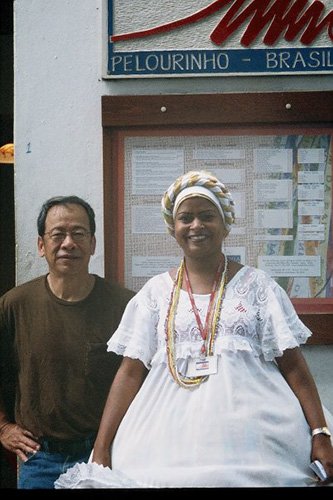
The author poses with the waitress at a peri-peri chicken restaurant in Manaus.
On the last morning, the MV Leao IV made its last caboclo settlement stop so a few of its passengers could disembark and the rest could have their last meal as part of their passage. The breakfast chatter was mostly about the festivities the night before and was accompanied by much hooting and laughter. Everyone was asking about the whereabouts of the two evangelist ministers. A crew member said both snuck out as they started unloading some cargo. He added that both were supposed to end their journey with the rest of us in Manaus. I guess neither wanted another recognition of their involvement in “the talent show,” the previous night. The crew member said both will likely take another boat to their final destination.
About three hours later, the MV Leao IV finally reached Manaus. The passengers, with much laughter and abrazos, bade farewell to each other. I did the same and also said goodbye to the crew, who said they were sorry to see me go. Apparently, they thoroughly enjoyed the Filipino dinners the last four nights. I proceeded to the wheelhouse to say goodbye to El Capitan. I turned over the keys of the cabin which I occupied for free during the last four days. He detached the keys from the key chain which had a large metal medal with the name of the riverboat and gave it to me as a memento. As I extended my hand to shake his, he brushed it aside and gave me an abrazo instead.
I turned to look for Pele and was told that he was already on the dock with my backpack and was looking for a taxi to take me to my hotel. I was already starting to miss him and El Capitan. He was a treasure trove of information about the river and the caboclo settlements. By the time I disembarked, he had already hailed a taxi for me. Shyly, he handed me a plastic bag with a T-shirt emblazoned with the name of the riverboat, a replica of the crew’s uniform. I thanked him profusely not just for the gift, but more for companionship the last four days. There was time for an abrazo, and before the “adeus,” he told me he was going to cook adobo for his family when he returned home.
After a late lunch and rest, I started exploring Manaus. It had its golden era around the turn of the last century during “the rubber boom.” Now, it is still a bustling city with many skyscrapers and traffic. Its more-than-a-century-old opera house and its replica of the Eiffel Tower are still worth a visit.
The following evening, I was on a bus to Sta. Elena de Uairen, a small Venezuelan city on the Brazilian border. During the overnight ride, my thoughts kept returning to the last five days. My fellow passengers must have thought me crazy as I couldn’t help but laugh as I recalled the events of those days. As I checked it out of my “bucket list,” I congratulated myself, happy not to have given up on a dream just because of the time it took to make it real. I didn’t start this visit to Brazil with the intention of realizing this dream. It was more of a whim, even as I knew the difficulties and the risks it would entail. But then, I think that sometimes life is about risking everything for a dream no one would know except me.
The Amazon River and the MV Leao IV were home to me for five days. But in that short span, I enjoyed friendship and community with people I had never met before and will likely never meet again. And my mind traced similar experiences in the other places in the region, which I called home in the last couple of decades: Quetzaltenango, Guatemala; Merida, Venezuela; Arequipa, Peru and San Cristobal de las Casas, Chiapas, Mexico. These recollections reminded me of the wise words of a fellow traveler whose name I no longer recall. ” You will never be completely home again because part of your heart will always be elsewhere. That is the price you pay for the richness of loving and knowing people in more than one place.”
How true!
Postscript: Technically, the Brazilian Amazon begins in Tabatinga. It is only kilometers away from the city of Manaus. But the latter is better known and more cosmopolitan. Popularly, it is considered as the other gateway to the Amazon. Tabatinga is located in the tri-border area and borders Santa Rosa, Peru on one side and Leticia, Colombia on the other.
The city Iquitos, Peru is along the banks of the Amazon. It is said that this is where the melted snow of the Andes drains and is considered as the starting point of the Amazon River. Iquitos cannot be reached by land transportation, only by boat or airplane.
Both the region and its capital share the name Arequipa. It is in the Peruvian Andes. As the snow melts in this region, it becomes the water that joins other tributaries and becomes the Amazon River.
I have been to Iquitos a couple of times and called Arequipa home for several summers.

Chibu Lagman taught Latin American Studies at the University of Alberta and the University of the Philippines. When not teaching, he worked as a news correspondent covering events in Latin America. He has either visited or lived in almost all the countries in Ibero America. He still commutes between Manila and Abya Yala (the Americas). He wrote this travelogue in San Cristobal de las Casas, Chiapas, Mexico, his favorite city in the region. Chibu is also a graduate of the Culinary Institute of America (CIA).
*****
Credit belongs to: www.positivelyfilipino.com
 Atin Ito First Filipino Community Newspaper in Ontario
Atin Ito First Filipino Community Newspaper in Ontario
